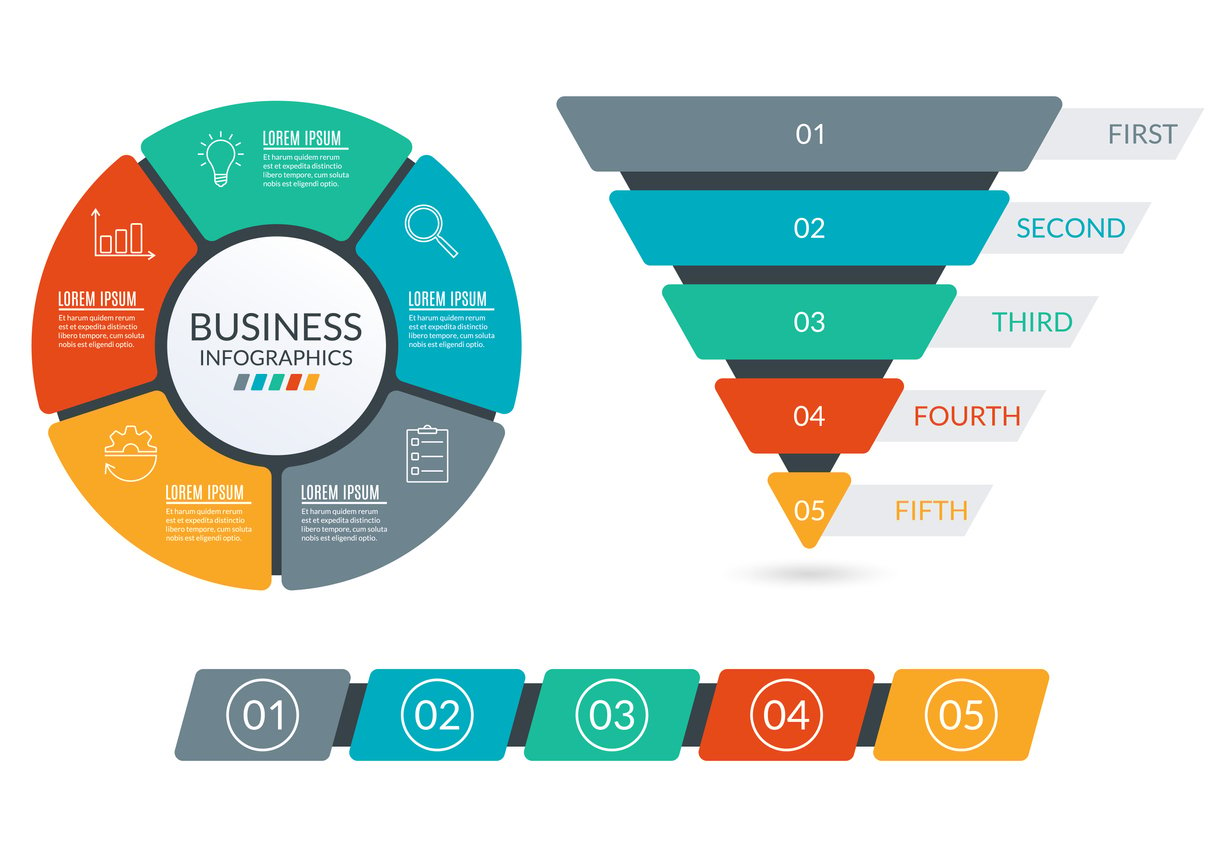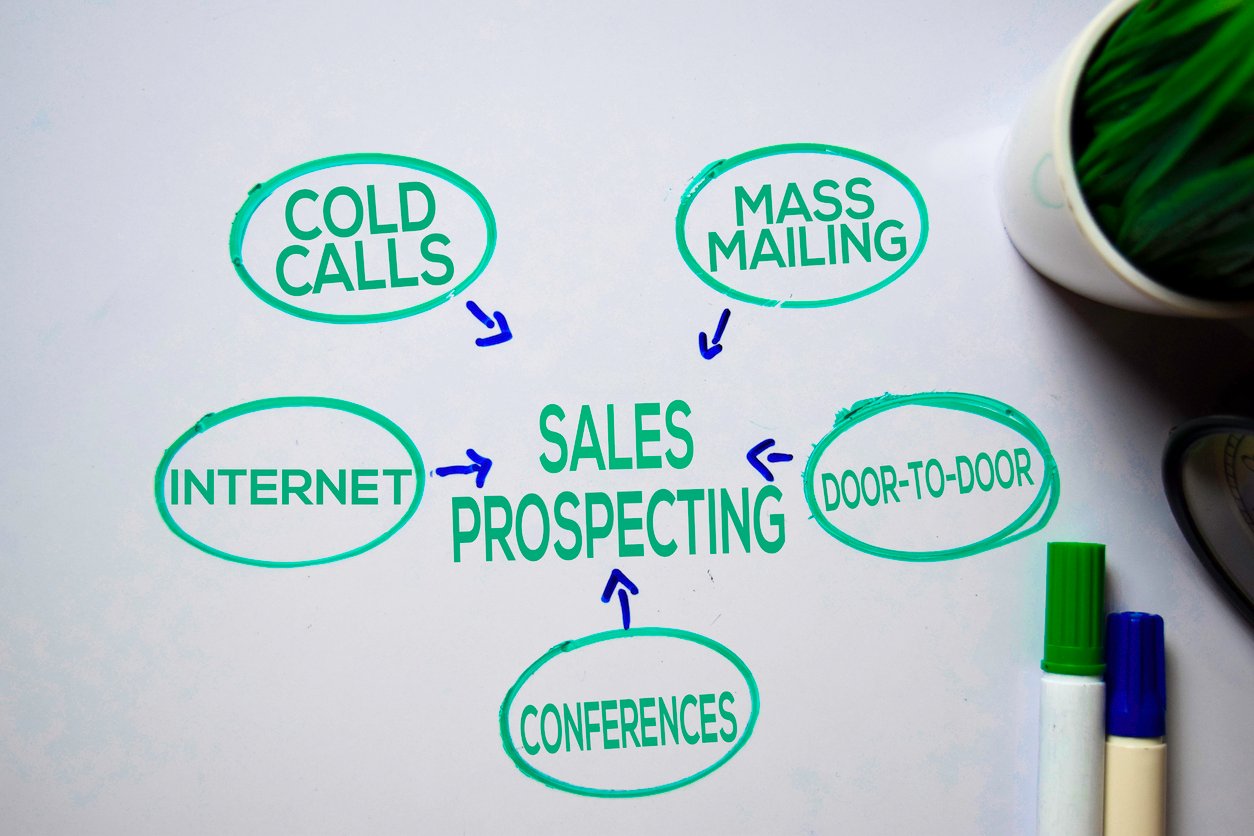
7 SMART Sales Goals Examples [Sales Manager Edition]
 Updated on
Updated on
By Ringy
Table of Contents
Table of Contents
There's this guy who at the beginning of every year would set a jogging goal, never meet it, and then set the same goal all over again year after year.
It's a running joke.
Now, we certainly don't want any version of that happening with our sales goals, right?
That's why it's important to set goals for your team that are actually achievable.
If you set sales goals without considering them, you are setting yourself-and your team-up for failure.
In fact, a whopping 40% of companies fail to meet their sales goals.
Without well-chosen and properly articulated sales goals, your sales team could end up being in that 40%.
This is why you need to follow a methodical, well-laid-out goal-setting strategy for sales.
The good news is such a strategy already exists. It's called SMART goals for sales.
Let's take a closer look at some SMART sales goals examples.
What Are SMART Goals for Sales?
The phrase SMART goals for sales cuts to the chase and is a concise, easy-to-remember, relevant, and, well, smart way to talk about goal-setting.
SMART is an acronym for:
- Specific
- Measurable
- Attainable
- Relevant
- Time-bound
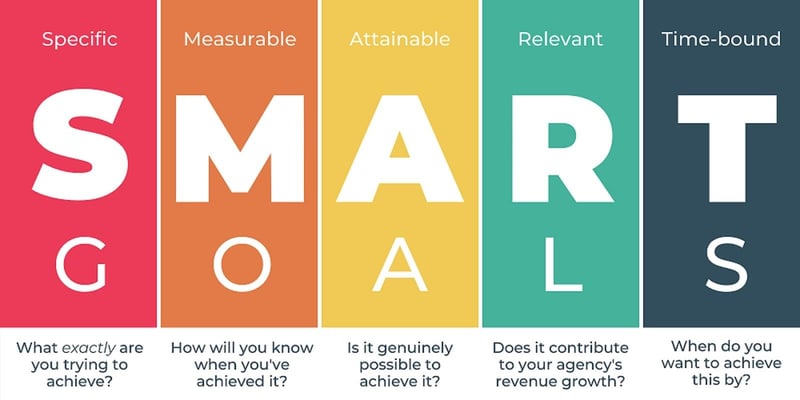
Let's look at each of these SMART sales objectives, one at a time.
1. Specific
Sales SMART goals use specific wording so that everybody on the team-from the sales manager to the sales rep-knows exactly what they are trying to achieve.
Simply stating ‘increase sales' is not a great example of SMART goals for the sales team because it is vague and open to interpretation.
On the other hand, ‘increase sales by 30%' is specific, and everybody in the team and organization is on the same page and can work with that specific target in mind.
In the fiscal year 2020, Apple's sales goals for the first quarter stated that the tech giant sought to increase revenue to between $85.5 billion and $89.5 billion and keep operating expenses between $9.6 billion and $9.8 billion.
Now that's as specific as it gets!
2. Measurable
SMART objectives for sales must be measurable. That is, you should be able to track and quantify your team's progress using tangible numbers. So ‘Increase sales from 200 units in the second quarter to 350 units in the third quarter is a measurable goal.
Without measurable goals, your team will be in the dark about what is expected from them, which is not exactly a recipe for success.
If the focus is on leads, a 50% increase in leads in March' is a measurable goal. So is ‘generating 100 additional leads in the second quarter.'
Similarly, don't say your goal as a team manager is to improve customer satisfaction (this isn't specific or measurable). Instead, say something like, ‘We are aiming for a customer satisfaction feedback score of 6 out of 10 or higher.'
By having a measurable goal, you can benchmark your progress. If in the middle of the month, you realize your goals are unlikely to be met, you can accordingly ask for additional resources or brainstorm with your team to step up the tempo.
3. Attainable
If you're selling 10 units per month, you can't suddenly expect your team to sell 200 units one fine month. Be realistic. Perhaps an achievable goal, in this case, would be selling 20 or 30 units.
If your goals are impossible to achieve, your team will be super-stressed and exchange ‘The boss is gotta be kidding' glances when you're not looking. Or, worse, when you are.
It's good to be ambitious with your targets, but if your team feels discouraged or burnt out, it will prove counterproductive.
If you brought in US$300,000 in revenue last fiscal period, setting a US$5 million this period may be unachievable unless there's a massive expansion in your team strength and an unusual spurt in demand for your product.
You need to have a shrewd sense of your team's capabilities and motivation levels and try to hit that sweet spot where the goals are challenging, and your sales reps are encouraged to work harder but at the same time not make it beyond their reach.
4. Relevant
Context matters.
Smart goals for sales should fit in with your overall sales strategy and the long-term goals of your business and not go off on a hazy tangent. For instance, if your customer profile is not active on Instagram, there is little point in aiming to generate 50 new clients through the platform.
Every department has a budget. As a sales manager, you'll have to think hard about where to allocate your team's budget to maximize revenue and reduce the length of the sales cycle, which is another way of saying that your goals should be relevant.
This is not to suggest that there should be no room for experimentation or you shouldn't think of new and innovative ways to sell. But rather than suddenly adding B2C sales to your existing B2B sales portfolio and diverting half your team to B2C, do a pilot.
In this case, your goal can be ‘Increasing lead conversion from 20 to 30%, and running a small research program with 5 sales agents in B2C sales.'
5. Time-Bound
Whenever you set sales goals, make sure there's a finish line so you don't work mindlessly into the future. Without a deadline, you are always tempted to constantly shift goalposts.
There are both short-term and long-term time-bound examples of SMART goals for sales managers. You need specific goals for the next month, next quarter, and next fiscal.
Setting sensible time-bound goals and sharing them with your team enables all sales agents to work with a clear focus.
Let's say your team's sales cycle is far too long, and you've made a comprehensive plan to slash it significantly. Instead of saying, ‘We want to decrease the sales cycle by 30%,' say, ‘We want to decrease the sales cycle by 30% by the end of the second quarter by 5% every month for 6 months.'
Different sales agents have different sales cycles. So fix individual goals for each rep that are realistic and achievable, and perhaps with an added incentive for top performers.
Importance of Setting SMART Sales Goals
Setting SMART sales goals is like equipping yourself with a laser targeting system. Here's why:
- Crystal Clear Direction: SMART goals give you a roadmap to success. You won't have to wonder what "good" looks like. You'll know exactly what you're aiming for, which will keep you focused and motivated.
- Boost Morale & Engagement: Hitting those targets is a fantastic feeling! SMART goals break down big achievements into smaller, achievable milestones. This steady progress keeps your sales team pumped and engaged.
- Better Resource Allocation: By clearly defining your goals, you can see where to invest your time and resources. Are cold calls the key, or should you focus on nurturing existing leads? SMART goals will illuminate the path.
- Improved Performance Tracking: Imagine measuring your progress with laser precision. SMART goals allow you to track your performance and make adjustments on the fly, ensuring you stay on course to crush your targets.
Benefits of Using SMART Sales Objectives
SMART sales objectives aren't just a fancy acronym - they're a powerful framework for taking your sales game to the next level. Here are the specific benefits that SMART objectives bring to the table:
Clarity and Focus
Imagine a sales team with no clear direction, everyone chasing their own idea of "success." Ouch! SMART objectives act like beacons, highlighting exactly what needs to be accomplished. This clarity translates to focused efforts.
Everyone on the team understands the specific goals, what "good" looks like, and how their individual efforts contribute to the bigger picture. Ambiguity and misinterpretations vanish, replaced by a laser focus on achieving those SMART objectives.
Measurability and Accountability
Forget about gauging success by vibes alone! SMART objectives are all about measurability. By setting clear metrics for success, you can track your progress with precision. Did you aim to close 20 deals this month? The numbers tell the tale, allowing you to identify areas for improvement and celebrate milestones along the way.
This measurable approach also fosters accountability. Individuals and teams become responsible for achieving their designated targets, creating a healthy environment where everyone takes ownership of their success.
Boosts Motivation
Let's face it—hitting a target feels fantastic! SMART objectives are designed to be achievable, setting your team up for a steady stream of wins. These wins, big and small, fuel sales motivation. Checking off those SMART sales goals gives you a sense of accomplishment, propelling your team forward and keeping them energized throughout the sales cycle.
Relevance to Overall Business Goals
Sales success exists within a larger ecosystem. SMART objectives ensure your sales team isn't operating in a silo. By aligning these objectives with the broader business goals, you create a unified front.
The team understands how their efforts contribute to the company's overall success. This fosters collaboration across departments and ensures everyone is rowing in the same direction.
Adaptability and Continuous Improvement
The business world is dynamic. Markets shift, and customer needs evolve. SMART objectives offer the flexibility to adapt. Regularly reviewing progress allows you to adjust goals based on changing circumstances.
This adaptability ensures your sales strategy remains relevant and effective. Furthermore, SMART objectives promote a culture of continuous improvement. By measuring results, you can identify areas for growth and implement new strategies to constantly push the boundaries of sales success.
7 Examples of SMART Goals for Sales Managers

When 138 sales professionals from different businesses were asked about the annual revenue targets they had achieved by September, more than 60% were nowhere close to achieving their sales quota.
If that's alarming, consider this: nearly 40% of companies admitted to failing to achieve their yearly sales goals.
What's going on?
It appears that goal-setting is not taken very seriously and sales managers are setting goals without thinking deeply about SMART principles. This can only lead to frustrated or demoralized employees.
To avoid this, it's important to set SMART sales goals after wider consultations with your team rather than a top-down approach and spend some time understanding their true significance.
Let's look at some SMART sales goals examples that will help you set your own SMART sales objectives:
|
Objective |
SMART goal |
|
1. Increase Sales Revenue |
Increase sales revenue for the third quarter by 15% |
|
2. Close More Deals |
Close 30 deals per month by the end of this quarter, using a networking and soft-selling approach |
|
3. Increase Average Deal Size |
Increase the average order size to US$500 by the end of the fiscal by including one upselling or cross-selling pitch in every customer interaction |
|
4. Reduce Customer Churn |
Train each member of the sales team to engage more closely with existing customers to reduce the churn rate by 30% by the end of the second quarter |
|
5. Lower Customer Acquisition Cost (CAC) |
Slash CAC by 20% in one month by tracking the source of traffic coming from different channels and retargeting advertising campaigns |
|
6. Reduce the length of sales cycles |
Reduce the sales cycle length by 10% in the next 2 quarters by greater research and automation of the sales process |
|
7. Increase Customer Lifetime Value (CLV) |
Boost CLV to US$4,000 in this fiscal by assertively pushing upselling opportunities |
1. Increase Sales Revenue

This is one of the most common examples of SMART goals for sales managers. Here, revenue refers to the sales revenue earned by your sales team selling various products and services. Clearly, this is bread and butter stuff that directly impacts the business of your organization.
Revenue goals are the easiest to set because most companies track revenue monthly, quarterly, and annually.
To achieve new revenue goals you have to discover creative ways to make more money.
In general, revenue is calculated using the formula:
Revenue = Unit Price of Each Product Sold x Number of Products Sold
SMART sales goals examples include:
- Increase sales revenue for the third quarter by 15%
- Increase monthly recurring revenue by 10% by the end of the second quarter by customizing sales pitch to each buyer
Ways to achieve this SMART goal:
- Build stronger communication bonds with customers and prospects
- Funnel more leads into your sales cycle by cold calling and emailing
- Increase conversion rates
- Focus on upselling and cross-selling
- Invest in training your sales agents
2. Close More Deals
To set a clear SMART goal for closing more deals. You can track the overall number of deals your sales team closes as a whole or look at the deals closed by each sales agent individually. Savvy sales managers do both.
Deals closed may be calculated using this formula:
Deals Closed Rate = (Number of Deals Closed/Number of Leads) x 100
SMART sales goals examples include:
- Close 30 deals per month by the end of this quarter, using a networking and soft selling approach
- Each individual sales rep should close 4 deals next month by focussing on hard selling and consultative selling
Ways to achieve this SMART goal:
- Sales reps should build strong relationships with prospects
- Sales agents need to understand clients' paint points
- Use a sales CRM system
- Create a timeline for each possible sale
- Make sure your team has mastered all sale closing techniques
3. Increase Average Deal Size
Closing a lot of deals brings diminishing returns if the size of the deal is small. To tackle this problem, brainstorm with your team to increase the deal size and average order value, and set a new SMART goal. A larger deal size translates into bigger commissions and an opportunity for the sales agent to exceed their monthly target.
A general formula for calculating Average Deal Size is:
Average Deal Size = Total Revenue Generated by Deals/Number of Deals Closed
SMART sales goals examples:
- Increase the average order size to US$500 by the end of the fiscal by including one upselling or cross-selling pitch in every customer interaction
- Increase Average Deal Size by bundling three services for the next 4 months in a limited-time offer
Ways to achieve this SMART goal include:
- Sales reps need to dig deep to understand customer's pain points and show how to address those
- Ensure that your sales team has clarity about whether upselling solves an immediate problem or is a long-term investment for the customer
- Put a system in place where leads are whetted and qualified
- Use personalization techniques
4. Reduce Customer Churn

SMART goals examples for sales include Customer Churn Rate, which is a measure of how efficient you are in retaining your customers. It is defined as the number of customers who leave a company in a stipulated time frame.
Retaining customers is a key revenue generator for businesses. Organizations lose USD $1.6 trillion per year due to customer churn or customer attrition.
So reducing customer churn is one of the most critical SMART sales goals examples to focus on.
To calculate customer churn, divide the number of customers you've lost in a certain period from the total you had at the beginning of that period.
Churn Rate Rate = (Customers Lost/Total Customers) x 100
SMART sales goals examples include:
- Train each member of the sales team to engage more closely with existing customers to reduce the churn rate by 30% by the end of the second quarter
- Increase the customer retention rate by 25% in the next 6 months by focussing on the pain points of your most valuable customers
Ways to achieve this SMART goal:
- Understand why the churn is happening through customer engagement sessions
- Focus on the requirements of your most valuable customers
- Offer discounts and loyalty bonuses to your customers
- Pay attention to customer complaints
5. Lower Customer Acquisition Cost (CAC)
Customer Acquisition Cost (CAC) refers to the resources and costs incurred in acquiring a new customer over a specified period of time. CAC is a fundamental business metric used by sales and marketing to measure the value generated by a new customer.
The more time you take to convert a prospect into a customer, the more you will spend on everything from ad spending and customer outreach campaigns to employee time.
That's why decreasing CAC is a key SMART sales goal.
You can calculate CAC using the following formula:
CAC = Total Cost to Acquire Customers (in a specified time period)/Total Number of Customers Acquired
SMART sales goals examples:
- Slash CAC by 20% in one month by tracking the source of traffic coming from different channels and retargeting advertising campaigns
- Reduce the cost to acquire new customers through the second quarter by US$50,000 in marketing, sales and salaries
Ways to achieve this SMART goal:
- Add customer value by giving them a new product fix or complimentary offering
- Start a customer referral program
- Use CRM to interact with qualified leads more effectively.
- Optimize your website's landing page experience
6. Reduce the length of sales cycles
The sales cycle gives you an estimate of the time your team will take to convert a lead into a customer. Shorter sales cycles are very desirable SMART sales objectives as they lead to increased revenue.
But more than that, your sales cycle time is a barometer of the vitality of your entire sales process—how well you've set up your sales funnel, what is the quality of your prospect targeting, and how efficiently your sales agents use automation to focus on selling.
At its most basic, the sales cycle can be calculated using a simple formula:
Sales length cycle = Total Number of Days it Takes to Close Every Sale/ Total Number of Deals
SMART sales goals examples include:
- Reduce the sales cycle length by 10% in the next 2 quarters by greater research and automation of the sales process
- Slash the cycle time from 90 to 60 days in the next quarter by focussing on high-scoring leads, investing in specialized training for sales agents and using multiple sales channels
Ways to achieve this SMART goal:
- Automate low-value tasks
- Align sales with marketing
- Follow up with customers diligently
- Prioritize your prospects
7. Increase Customer Lifetime Value (CLV)
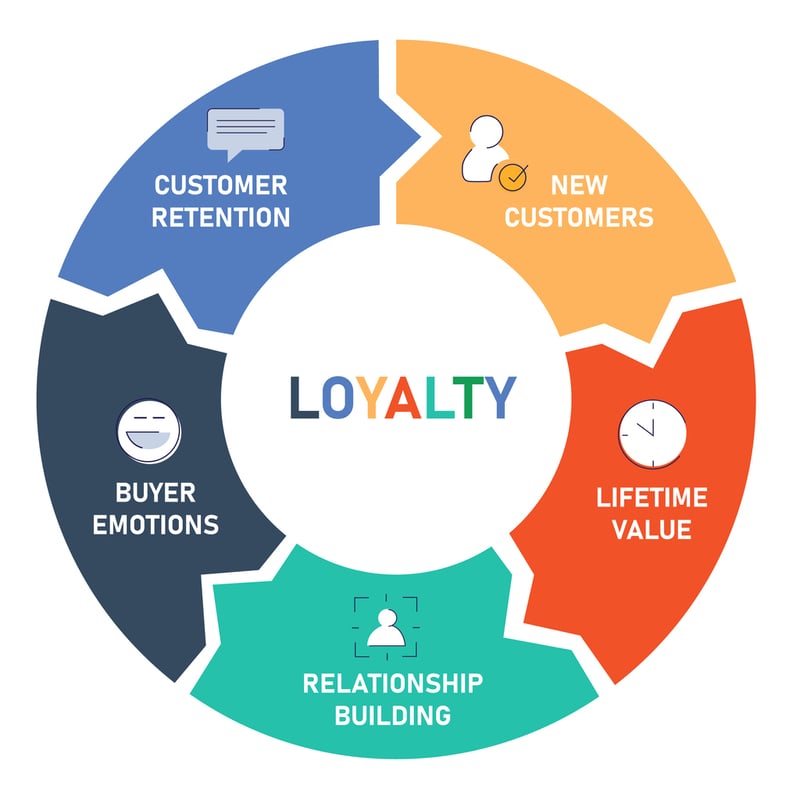
Customer Lifetime Value (CLV) is an estimate of the total revenue a business can expect from a single customer account from the beginning to the end of the business relationship. CLV is determined by a number of factors such as qualification, prospecting, and upselling, so setting a SMART goal boils down to the key factors defining the business relationship.
To set a SMART CLV goal, you may want to choose an activity that boosts your customer retention rate, raises their spending or does both.
Calculating CLV can be a little complicated and differs from vertical to vertical. In general, you can use this formula:
CLV = Average Transaction Amount of Customer x Number of Yearly Transactions x Number of Years of Business Relationship.
SMART sales goals examples include:
- Boost CLV to US$4,000 in this fiscal by assertively pushing upselling opportunities
- Increase CLV by 15% in the next 2 quarters by offering larger discounts
Ways to achieve this SMART goal:
- Build a data-driven dashboard of your customers' needs, likes and dislikes
- Automate customer onboarding to boost overall productivity
- Increase your average order value
- Build long-lasting customer relationships
Case Studies: Real Life SMART Goals Application
SMART sales objectives are not just a theoretical concept.
There are many fascinating real-life examples of SMART goals for sales managers which solved specific problems that their companies were facing.
Here are 3 such examples:
1. Zappos

Zappos was the first company to come up with this innovative SMART goal for their customer service department—personal emotional connection (PEC).
Many companies have followed them since then.
According to Zappos, PEC is a commitment that every employee in the company makes to create and sustain a positive relationship with their customers. This also applies to employees in the company who are not in the customer service teams.
But how do you measure PEC?
Zappos did it by an easily measurable 100-point scale which it called ‘Happiness Experience Form.'
The Happiness Experience Form used the criteria below:
|
Happiness Experience Form Criteria |
Points Allocated |
|
Did the sales rep try twice to make a personal emotional connection (PEC)? |
25 |
|
Did the sales rep keep up the rapport after the customer responded to their attempt? |
25 |
|
Did the sales rep address the customer's unstated needs? |
25 |
|
Did the sales rep provide a 'wow experience'? |
25 |
Agents have to maintain a 50-point average to ensure they've engaged in a meaningful conversation with the customer.
Result: With this exceptional focus on customers, Zappos improved its Net Promoter Score (NPS) and built a global brand.
2. Mention
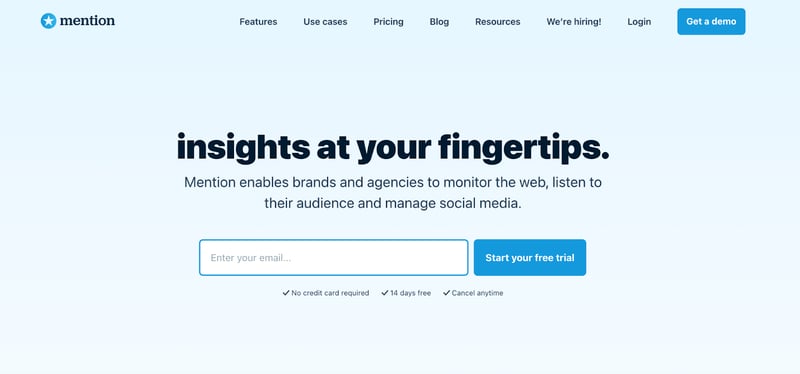
Mention sells a social media monitoring software that enables businesses to track what is being said about their brand online.
After consistent growth for a few years, Mention hit a wall and found that the churn rate, or the number of customers leaving them, was high. So, it decided to use SMART goals to reduce its churn rate.
The goal was: Improve customer communication and slash churn by 20% in three months.
Here's how they went about it:
- Existing Mention users were segmented depending on membership type (free, trial or paying), and the more valuable members (paying and trial) were given priority when it came to customer support.
- This was done after the company's research indicated that paid and trial groups were more likely to buy their product compared to those on the free plan.
- Consequently, the customer support team reframed their priorities and also saved time to accomplish other goals like incorporating customer feedback and attending product meetings.
Result: As a direct consequence of this SMART goal-setting, Mention lowered its churn rate by 22% in just one month, and the support team's time spent on support was slashed by half, even as it reported higher customer satisfaction ratings from its valuable user base.
3. Rain Group
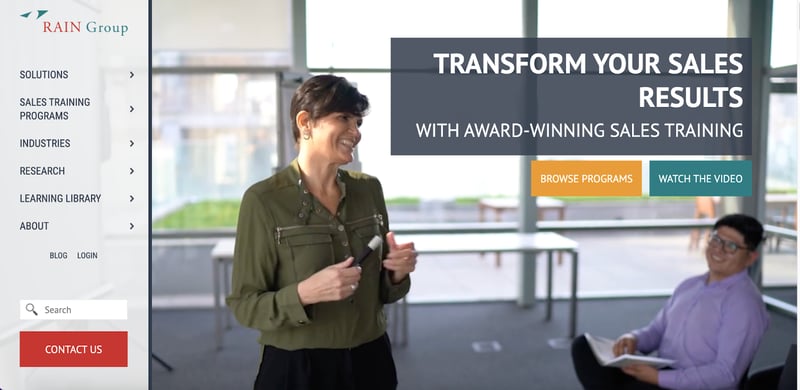
Since they are themselves involved in imparting sales training to companies around the world, the Rain Group is naturally tuned in to the idea of SMART goals.
One such goal they successfully implemented was to generate 120 sales-ready leads in a quarter through marketing.
They did this by:
- Adding staff
- Increasing content
- Enhancing primary research
- Increasing speaking engagements both online and offline
- Driving marketplace presence
Result: Rain Group saw stronger lead activity which was a key contributing factor in increasing revenue by 33%.
Conclusion
As explained in this blog post, SMART goals are not just a fancy acronym but a powerful way to reimagine your sales and marketing processes and bring about real and quantifiable results.
We've seen examples of SMART goals and real-life business case studies of how these principles were successfully applied.
Ringy is committed to providing you with all the necessary technological tools, products, and software to help you meet your SMART sales goals.
So, what're you waiting for? Call Ringy today!

Skyrocket your sales with the CRM that does it all.
Calling? Check. SMS? Check. Automation and AI? Check. Effortlessly keep in touch with your customers and boost your revenue without limits.

Take your sales to new heights with Ringy.
Sales in a slump? Ringy gives you the tools and flexibility you need to capture leads, engage with them, and turn them into customers.
Subscribe to Our Blog
Enter your email to get the latest updates sent straight to your inbox!
Categories
Related Articles






















